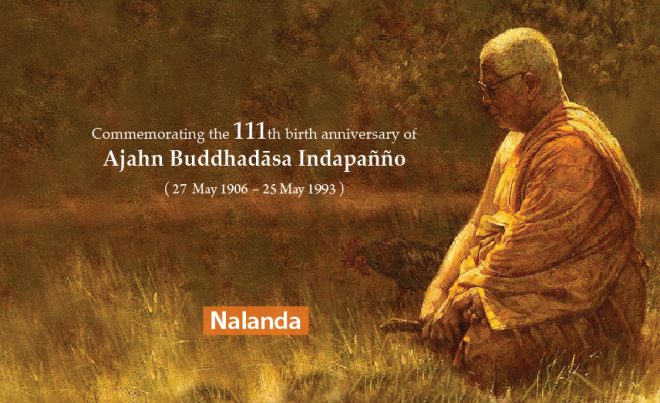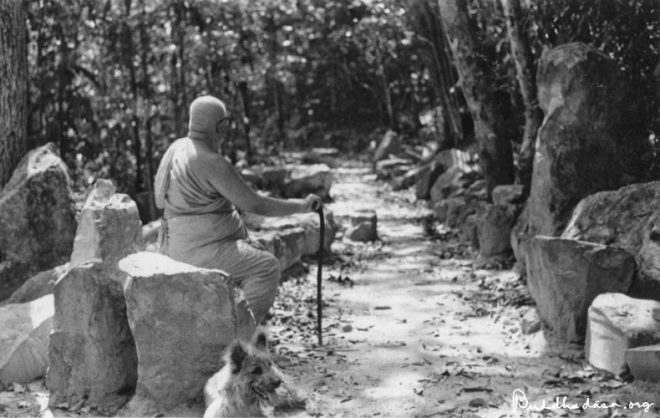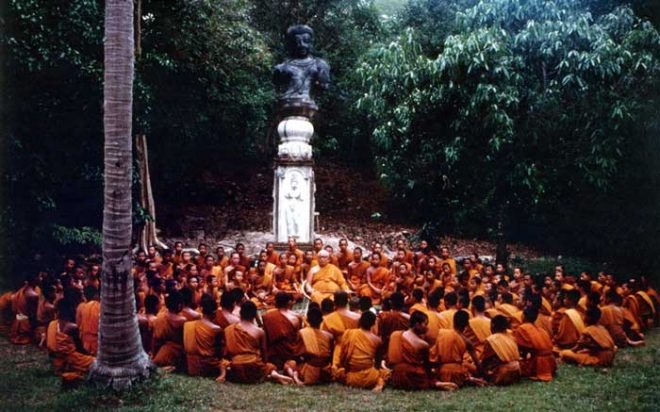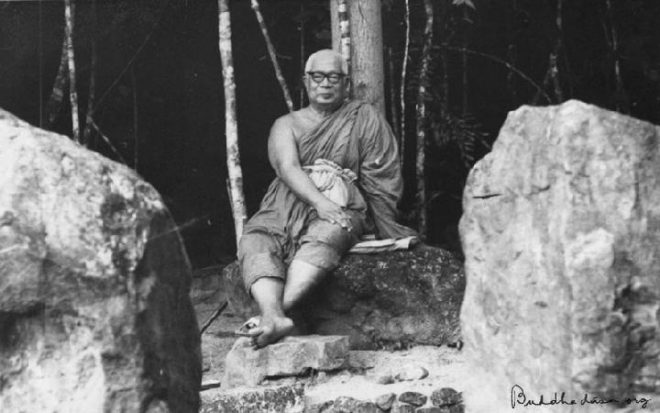Ajahn Buddhadāsa’s 111th birth anniversary
Ajahn Buddhadāsa’s 111th birth anniversary
Ajahn Buddhadāsa’s philosophy, way of life, and teachings continue to have a positive influence on the development of Thai Buddhist movement.This week, we commemorate the life and teachings of one of the most notable Buddhist teachers of the 20th century – Ajahn Buddhadāsa Indapañño (Phra Dharmakosacarya) of Thailand. Ajahn Buddhadāsa was born on 27 May 1906 in Chaiya, Southern Thailand, to a Chinese Hokkien father and Thai mother. He renounced the worldly life at age 20 and led an exemplary life of an ascetic bhikkhu until his passing.
As a young bhikkhu, Ajahn Buddhadāsa left to study Buddhist doctrines and Pāli language in Bangkok. There, he found most of the city temples dirty, crowded, and most troubling to him, the Sangha to be corrupt ¹. He noted that many monks were “preoccupied with prestige, positions, and physical comfort, with little interest in practising towards the higher ideals of Buddhism”.
As a result of this encounter, he returned to his native South and started a simple forest monastery near to his village, which he named ‘Suan Mokkh’ – a combination of the Thai word สวน ‘suan’ (which means “garden”), and the Pāli word ‘mokkha’ (which means “liberation from suffering”). He strove for a simple and straight practice in accordance to the Buddha’s core teachings, and avoided the traditional ritualism and internal politicking that dominated Thai monastic order at that time.
Ajahn Buddhadāsa’s ability to explain complex Buddhist philosophical teachings in an easily-understandable way, attracted many people to his forest retreat centre. Soon, many monastic and lay disciples gathered around him to learn and practise Dhamma at ‘Suan Mokkh’, including some foreigners who became monks under his tutelage.
Ajahn Buddhadāsa mainly taught the Buddha’s meditation method of ‘Anapanasati’ – mindfulness of breathing. In later years, he initiated and took part in interfaith dialogues with Christian and Muslim clergies to illuminate the positive role of religions in shaping humanity, as well as the proper approach towards religion and faith.
Many of Ajahn Buddhadāsa’s Dhamma lectures were transcribed by his followers and published as useful booklets, which further cemented his role as an influential social and religious ‘reformist’ thinker. His most well-known publication was the ‘Handbook for Mankind’ – an outline of the meaning and purpose of human existence.
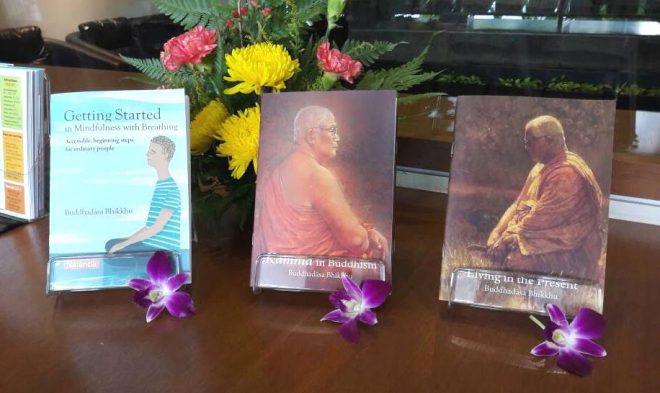
Nalanda Buddhist Society published a series of Ajahn Buddhadāsa’s teachings in May 2017 to commemorate his 111th birth anniversary.
After a series of illness, Ajahn Buddhadāsa passed away on 25 May 1993. According to his wishes and the modest lifestyle of a bhikkhu, he was cremated in a simple ceremony without the usual pomposity associated with the funerals of senior monks.
Ajahn Buddhadāsa’s philosophy, way of life, and teachings continue to have a positive influence on the development of Thai Buddhist movement. His legacy is perpetuated by the good work of contemporary institutions such as the Buddhadāsa Foundation (established in 1994); Buddhadāsa Indapañño Archives (established in 2010), Liberation Park in the U.S.A., and of course, ‘Suan Mokkh’ itself.


